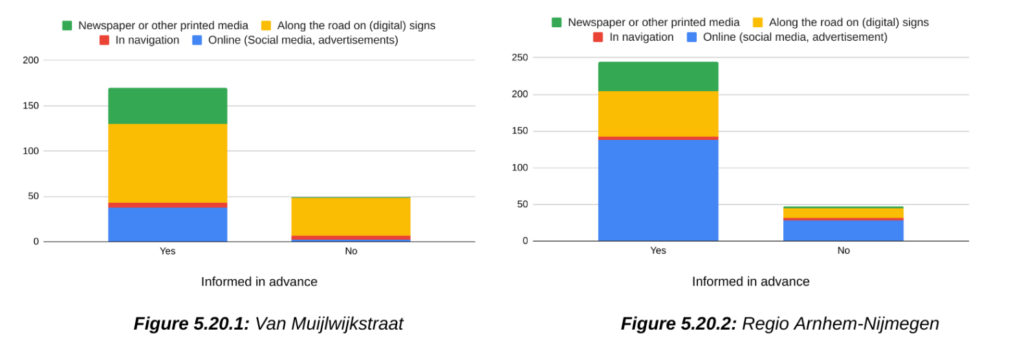
The effectiveness of OTM for municipalities – Part 2
My name is Joris, a Civil Engineering student at the University of Twente. Over the past few months, during my internship at TripService, I have been researching the effectiveness of Online Traffic Management (OTM) on city roads. In this blog, I will explain what Online Traffic Management entails, what I am specifically investigating, and the projects on which I am conducting this research.
Online Traffic Management (OTM) informs road users about upcoming roadworks through online channels such as Waze, Facebook, Instagram, and Google Ads. These tools offer the advantage of targeted communication to specific audiences, allowing for a broader or more specific reach. In addition to providing information, OTM also offers features like map adjustments in navigation systems, traffic monitoring via the Roadwork Traffic Dashboard, and post-trip analysis of travel behavior and perceived inconvenience during the roadworks.

The main goal of the research is to establish and test an evaluation framework for Online Traffic Management. The first step is to identify indicators that can measure the effectiveness of OTM and to assess whether data is available to measure these indicators. The data collection already provides good insights into what data is available and what can be done with it. This research utilizes traffic data from Dexter by NDW, as well as survey results and advertisement outcomes from completed projects. Additionally, I conducted interviews with the project manager or traffic expert from three different projects to gather background information and understand their perspective on the effectiveness of OTM.

The traffic data from Dexter includes travel times on certain routes and traffic intensity (number of vehicles per hour) at a location over several weeks. Travel time data is available in many places, but traffic intensity data is scarce on Dexter. This makes the research a bit more challenging because while travel time data can provide valuable insights into traffic increases on a road, it does not show exact numbers, something that traffic intensity data does. Therefore, some assumptions will be necessary, and I will also attempt to calculate the increase in traffic intensity.
The analysis of the surveys reveals a lot of valuable information, such as how many road users were aware of the roadworks through Online Traffic Management and what actions they decided to take based on the information. There are many survey responses, making the results highly useful and reliable. The interviews with the project manager/traffic expert from the three projects offer good insights into the strengths of Online Traffic Management and where improvements can be made.
In the next and final blog, I will share the results of the research. I will also discuss my experience during the internship at TripService, my thoughts on the research process, and my future plans!
